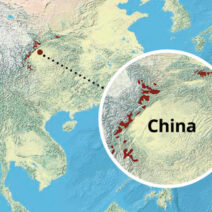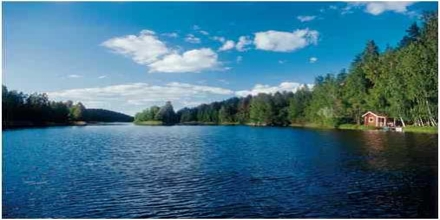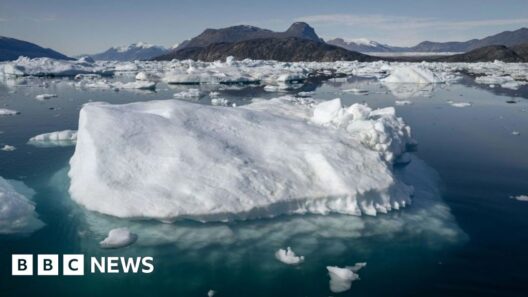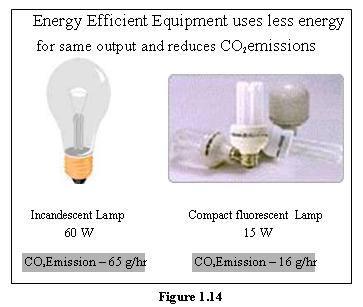When we think of climate, images of scorching deserts or freezing tundras can come to mind, yet one of the most temperate and inviting climates around the globe is aptly named the temperate climate. This climate zone, situated between the tropics and polar regions, embodies a unique balance of warmth and coolness, making it a key area for biodiversity, agriculture, and human habitation. Understanding what constitutes a temperate climate is essential for appreciating its impact on the natural environment and human society.
Defining Temperate Climate
In simple terms, a temperate climate is characterized by moderate temperatures and precipitation throughout the year. Typically, this climate features four distinct seasons: spring, summer, autumn, and winter. The average temperature varies significantly, often ranging between 30°F (-1°C) and 75°F (24°C) over the course of the year. Furthermore, regions experiencing a temperate climate usually have a yearly rainfall of between 20 to 60 inches, conducive to a rich variety of flora and fauna.
While the specific characteristics of temperate climates can vary based on geographic location, they share some common traits. These regions often experience a mix of continental and maritime influences. For instance, the coastal areas may have milder winters and cooler summers due to the adjacent bodies of water, whereas inland areas might see a more pronounced temperature variation.
The Seasonal Dance of Temperate Climates
Spring and autumn are particularly notable in temperate climates, as they serve as transitional periods. Spring often brings a vibrant resurgence of life—blossoming flowers, budding trees, and the awakening of various animal species. During the summer, temperatures may reach their peak, encouraging outdoor activities and agricultural productivity. Warm weather encourages growth in crops, while extended daylight hours enhance the overall vitality of ecosystems.
Conversely, autumn is noted for its stunning foliage, as deciduous trees shed their leaves in preparation for the coming winter months. This seasonal shift offers a unique aesthetic experience while also playing a crucial role in nutrient cycling within these ecosystems. The winter months, while chillier, are not typically marked by extreme frigid temperatures. Instead, they encourage a period of dormancy that benefits both flora and fauna.
The Global Landscape of Temperate Climates
Temperate climates can be found in various parts of the world. They are primarily located in regions such as North America, Europe, East Asia, and parts of Australia and New Zealand. Some well-known temperate climate regions include:
- The Northeastern United States: Characterized by cold winters and warm summers, this region presents a diverse ecosystem, thriving with deciduous forests and a plethora of wildlife.
- Western Europe: With its maritime influence, countries such as the United Kingdom, Germany, and France enjoy mild climates that promote lush vegetation and robust agricultural practices.
- East Asia: Zones in Japan and parts of China showcase temperate climates that allow for a rich variety of crops and unique biodiversity.
- Southern Australia: This region experiences mild winters and hot summers, providing an array of habitats for different species.
Enhancing Agricultural Productivity
The temperate climate significantly contributes to agricultural productivity. With its moderate temperatures and seasonal rainfall, it supports a diverse range of crops. Farmers benefit from the predictable weather patterns, which allow for the cultivation of fruits, vegetables, and grains. This bounty is not only crucial for local economies but also contributes significantly to global food supply chains.
Crops such as wheat, corn, and barley flourish in temperate climates, and the favorable conditions often yield multiple harvests within a year. Moreover, the variations in climate within the temperate zones allow farmers to engage in crop rotation, reducing soil depletion and enhancing long-term agricultural sustainability.
Challenges and Concerns Facing Temperate Regions
Despite their advantages, temperate climates face numerous challenges that warrant attention. Climate change poses significant risks to these regions, altering historical weather patterns and impacting agricultural viability. Increasing temperatures, erratic precipitation, and the likelihood of extreme weather events such as storms and droughts can compromise the stability of ecosystems and agriculture.
Additionally, human activities such as urbanization and deforestation threaten the delicate balance that defines temperate ecosystems. The encroachment of urban areas into natural habitats leads to habitat fragmentation, diminishing biodiversity. It is crucial that strategies are implemented to protect these environments through sustainable practices and conservation efforts.
In conclusion, understanding the characteristics and importance of temperate climates is integral for fostering environmental awareness and sustainable practices. With their unique blend of seasonal beauty, agricultural richness, and ecological diversity, temperate climate regions are essential not only for their inhabitants but also for the planet as a whole. As we face the challenges of climate change and human encroachment, preserving these vital ecosystems has never been more critical.







